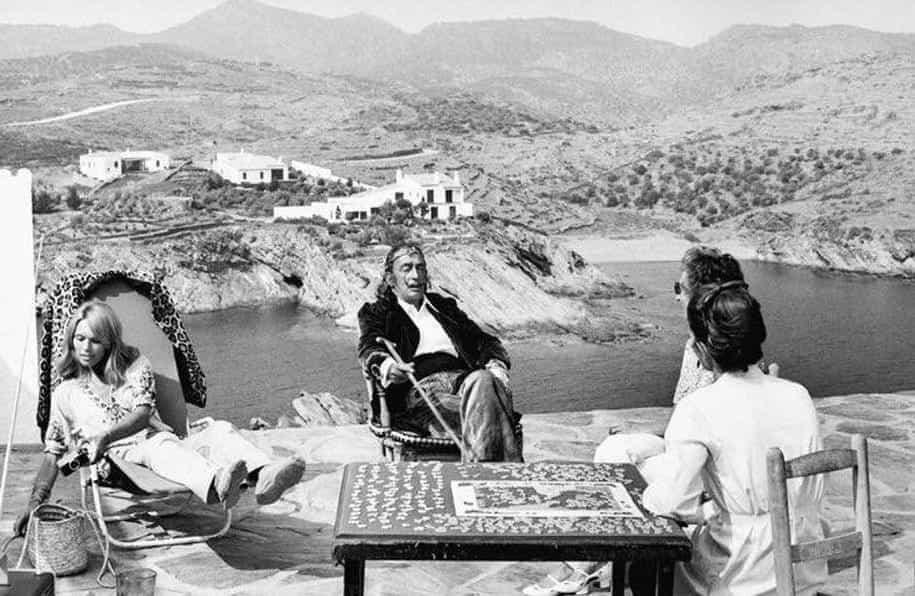The Pearl of Costa Brava
Cadaques is a magnificent remote fishing village situated in the Cap de Creus peninsula on the famous Spanish Costa Brava (close to the French border), recognized by the narrow cobblestone streets with their charming whitewashed houses overlooking incredible views of the Mediterranean Sea. The village is dominated by a seventeenth century church which boasts an astonishing baroque altar.
A source of inspiration
Ever since the 1950s, the village has been an important cultural meeting point, where artists such as Marcel Duchamp, Man Ray, Picasso, amongst others, used to visit, attracted by the beautiful light and amazing landscapes as well as by the enigmatic figure of Salvador Dalí, who had his legendary home studio in the nearby Port Lligat.
A visite of ExpoDali is a must – A unique exhibition of 250 original graphic works of Salvador Dali (Adress : Santa Margarida 24 – Cadaques)
A broad range of activities
Cadaques not only offers a wide selection of cultural activities (art galleries, museums, concerts, traditional events… and gastronomic experiences) but also a broad range of sporting activities such as boating, kayaking, diving, hiking or cycling. One of the main attractions is the excellent hiking opportunities that the Cap de Creus Natural Park provides.

The boat of Casa del Capitan
Our boat (for 8 persons) can be rented with a skipper.
Explore the luxurious nature of the Parc de Creus National Park from the sea, or enjoy a sunny day and a swim in the crystal clear water of the Mediterranean Sea.
Cadaques through history
Until the 19th century
Enclosed by mountains, Cadaqués is a fishing village accessible only by sea.
Historically, Cadaqués was a popular shelter for pirates who took refuge here after plundering ships on the high seas.
In the 18th century, winegrowing prospered in the area and enriched the commune. However, the arrival of phylloxera at the beginning of the 20th century led to its near-ruin, and the departure of many inhabitants to Cuba.
1910 – 1930
Spanish emigrants to the United States and Cuba returned to the village after making their fortunes. These “Cubanos”built splendid houses that have become part of the town’s cultural heritage.
Cadaqués is finally linked to the rest of Spain by a carriage road, completed in 1927.
1930 – 1950
In 1930, seduced by the landscape, the light and the isolation, Salvador Dalí settled with his wife Gala in a fisherman’s cottage in the cove of Port Lligat. In his wake, Cadaqués became a place of inspiration for many artists and intellectuals (Duchamp, Picasso, Magritte, Eluard, Ernst, Buñuel…).
The Spanish Civil War led to their departure, but the town’s isolation preserved its charm. After the war, the town’s artistic spirit was revived. A transition was made from a traditional fishing economy to tourism.




1950 – 1980
Cadaqués gains notoriety thanks to its reputation as a fashionable destination.
Its influence becomes international thanks to Dalí, and it consolidates its status as an artistic enclave: cultural prosperity and the attraction of numerous artists and celebrities.
Growing tourism start to change the town’s character. Infrastructure are now developed while Cadaques heritage is still preserved.
1980 – 2000
A balance is found between tourism and preservation, while the unique blend of nature and culture attracts more and more visitors every year.
Modernization continues with investments in infrastructure to support tourism, and the creation of festivals in honor of Dalí and local heritage.
Since 2000
In 1998, the Cap de Creus was classified as a national park, and in 2005 the Tudela natural site was landscaped. Indeed, the village and the region started a strategy focused on sustainable tourism practices. Meanwhile, Cadaques keep a strong desire to preserve the cultural and artistic identity of Cadaqués.
Therefore, Cadaqués strenghten its position as a leading destination on the Costa Brava. Moreover, thanks to cultural events such as the Cadaqués International Music Festival, the village attract an international audience.
